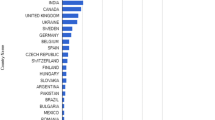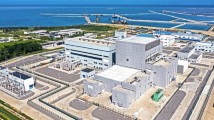Abstract
The accelerator-driven subcritical system (ADS) with a hard neutron energy spectrum was used to study transmutation of minor actinides (MAs). The aim of the study was to improve the efficiency of MA transmutation while ensuring that variations in the effective multiplication factor (keff) remained within safe margins during reactor operation. All calculations were completed using code COUPLE3.0. The subcritical reactor was operated at a thermal power level of 800 MW, and a mixture of mono-nitrides of MAs and plutonium (Pu) was used as fuel. Zirconium nitride (ZrN) was used as an inert matrix in the fuel elements. The initial mass composition in terms of weight percentages in the heavy metal component (IHM) was 30.6% Pu/IHM and 69.4% MA/IHM. To verify the feasibility of this MA loading scheme, variations in keff, the amplification factor of the core, maximum power density and the content of MAs and Pu were calculated over six refueling cycles. Each cycle was of 600 days duration, and therefore, there were 3600 effective full power days. Results demonstrated that the effective transmutation support ratio of MAs was approximately 28, and the ADS was able to efficiently transmute MAs. The changes in other physical parameters were also within their normal ranges. It is concluded that the proposed MA transmutation scheme for an ADS core is reasonable.













Similar content being viewed by others
References
Y. Zhou, China’s spent nuclear fuel management: current practices and future strategies. Energy Policy 39(7), 4360–4369 (2011). https://doi.org/10.1016/j.enpol.2011.01.055
D. Warin, Status of the French research program on partitioning and transmutation. J. Nucl. Sci. Technol. 44(3), 410–414 (2007). https://doi.org/10.1080/18811248.2007.9711302
A. Gulevich, A. Kalugin, L. Ponomarev et al., Comparative study of ADS for minor actinides transmutation. Prog. Nucl. Energy 50(2), 359–362 (2008). https://doi.org/10.1016/j.pnucene.2007.11.084
OECD/NEA, Accelerator-Driven System (ADS) and Fast Reactors (FR) in Advanced Nuclear Fuel Cycles: A Comparative Study (OECD/NEA, Paris, 2002). ISBN 92-64-18484-8
W.L. Zhan, H.S. Xu, Advanced fission energy program-ADS transmutation system. Bull. Chin. Acad. Sci. 27(3), 375–381 (2012). https://doi.org/10.3969/j.issn.1000-3045.2012.03.017
H. Ait-Abderrahim, MYRRHA: a multipurpose accelerator driven system for research & development. Nucl. Instrum. Methods A 463(3), 487–494 (2001). https://doi.org/10.1016/S0168-9002(01)00164-4
S.I. Tanaka, High intensity proton accelerator project in Japan (J-PARC). Radiat. Prot. Dosimetry. 115(1–4), 33–43 (2005). https://doi.org/10.1093/rpd/nci139
T. Mukaiyama, H. Takano, T. Ogawa et al., Partitioning and transmutation studies at JAERI both under OMEGA program and high-intensity proton accelerator project ☆. Prog. Nucl. Energy 40(3–4), 403–413 (2002). https://doi.org/10.1016/S0149-1970(02)00032-X
M. Viala, M. Salvatores, H. Mouney, The SPIN program-assets and prospects, in Paper Presented at Proceedings of the International Conference on Future Nuclear System (Global’97), Yokohama, Japan, 5–10 October, 1997
K. Tsujimoto, T. Sasa, K. Nishihara et al., Neutronics design for lead-bismuth cooled accelerator-driven system for transmutation of minor actinide. J. Nucl. Sci. Technol. 41(1), 21–36 (2004). https://doi.org/10.1080/18811248.2004.9715454
S. Ishida, H. Sekimoto, Finding the best fuel assemblies shuffling scheme of ADS for MA transmutation using dynamic programming. Nucl. Eng. Des. 240(10), 3645–3653 (2010). https://doi.org/10.1016/j.nucengdes.2010.07.008
L. Zhang, Y.W. Yang, Y.G. Fu et al., Development and validation of the code COUPLE3.0 for the coupled analysis of neutron transport and burnup in ADS. Nucl. Sci. Technol. 29(9), 124 (2018). https://doi.org/10.1007/s41365-018-0471-4
D.B. Pelowitz, MCNPX User’s Manual, Version 2.7.0 (Los Alamos National Laboratory, Los Alamos, 2011)
A.G. Groff, ORIGEN2: A Revised and Updated Version of the Oak Ridge Isotope Generation and Depletion Code. ORNL-5621 (1980)
A. Talamo, W. Ji, J. Centar et al., Comparison of MCB and MONTEBURNS Monte Carlo burnup codes on a one-pass deep burn. Ann. Nucl. Energy 33(14–15), 1176–1188 (2006). https://doi.org/10.1016/j.anucene.2006.08.006
A. Stankovskiy, G.V.D. Eynde, P. Baeten, et al., ALEPH2—a general purpose Monte Carlo depletion code, in Paper Presented at PHYSOR 2012: Conference on Advances in Reactor Physics—Linking Research, Industry, and Education. Knoxville, Tennessee, USA, 15–20 April, 2012
Y. Arai, M. Akabori, K. Minato, Progress of nitride fuel cycle research for transmutation of minor actinides (2007)
International Atomic Energy Agency. https://www-nds.iaea.org. Accessed 13 July 2018
T. Mukaiyama, H. Yoshida, T. Ogawa, Minor actinide transmutation in fission reactors and fuel cycle considerations. IAEA-TECDOC-693 (IAEA, Vinenna, 1993)
N.Z. Zainuddin, G.T. Parks, E. Shwageraus, The factors affecting MTC of thorium–plutonium-fuelled PWRs. Ann. Nucl. Energy 98, 132–143 (2016). https://doi.org/10.1016/j.anucene.2016.07.034
Author information
Authors and Affiliations
Corresponding author
Additional information
This work was supported by the Strategic Priority Research Program of The Chinese Academy of Sciences (No. XDA21010202).
Rights and permissions
About this article
Cite this article
Meng, HY., Yang, YW., Zhao, ZL. et al. Physical studies of minor actinide transmutation in the accelerator-driven subcritical system. NUCL SCI TECH 30, 91 (2019). https://doi.org/10.1007/s41365-019-0623-1
Received:
Revised:
Accepted:
Published:
DOI: https://doi.org/10.1007/s41365-019-0623-1




